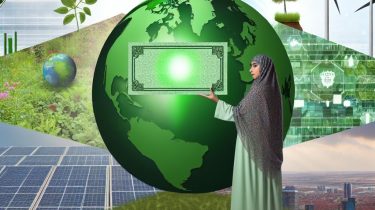What are green loans, and how do they support sustainability?

Understanding Green Loans
Green loans are an innovative form of financing specifically designated for projects that advocate for environmental sustainability. These loans are architected to foster the growth and execution of eco-friendly projects by offering financial support under advantageous terms. By enabling investment in environmentally conscientious projects, green loans make a notable contribution to sustainable development.
Characteristics of Green Loans
The quintessential feature that differentiates green loans from other financial instruments is their explicit purpose. These loans are reserved solely for projects that demonstrate a positive environmental impact. Eligible projects may include a broad spectrum of initiatives such as renewable energy ventures, energy efficiency enhancements, pollution mitigation measures, sustainable agricultural practices, or conservation projects. Financial institutions offering green loans may stipulate that borrowers meet particular criteria to guarantee the environmental advantages of the funded projects are realized.
Borrowers availing themselves of green loans often undergo rigorous scrutiny to ensure compliance with specific environmental standards. The financial institutions might conduct regular audits to verify that the funds are used appropriately and that the projects achieve the anticipated environmental outcomes. The borrower is usually required to provide detailed reports highlighting the use of the proceeds, specific environmental impacts realized, and any challenges confronted during project implementation.
The Role of Green Bond Principles
Loan arrangements are frequently aligned with structures such as the Green Loan Principles (GLP), which have been developed by the Loan Market Association (LMA) alongside other industry bodies. These principles furnish a framework for transparency and integrity in crafting green loans, anchored on four pivotal components: the use of proceeds, the process for project evaluation and selection, the management of proceeds, and reporting. More insights into the Green Loan Principles can be accessed on the Loan Syndications and Trading Association website.
Each component serves a critical function in ensuring the successful execution and sustainability of the projects. The use of proceeds dictates how the funds must be allocated solely towards green projects. The process for project evaluation and selection ensures that only projects with clear environmental benefits receive funding. The management of proceeds mandates that funds are tracked and managed effectively. Lastly, reporting requires transparency in documenting and communicating the environmental impact and outcomes of the projects supported.
How Green Loans Support Sustainability
Green loans support sustainability by funneling capital toward initiatives that enhance the environment, thereby addressing some of the most urgent ecological challenges.
Promoting Renewable Energy
Green loans serve as a catalyst for investments in renewable energy sources, such as solar, wind, and hydroelectric power. By reducing reliance on fossil fuels, these projects contribute to a reduction in greenhouse gas emissions and support the pursuit of a long-term ecological equilibrium. Within the renewable energy sector, innovators working on technological advancements or scalability of solutions often rely on green loans to propel their projects forward. This funding not only aids in overcoming financial barriers but also signifies an alignment with sustainable practices.
Enhancing Energy Efficiency
Green loans are pivotal in facilitating the development of energy-efficient technologies and infrastructure. By prioritizing energy efficiency, projects funded through green loans help lessen energy consumption, which in turn minimizes waste and mitigates environmental pollution. This role of green loans is becoming increasingly important as global energy demands rise. By fostering the adoption of energy-efficient systems, such as smart grids or energy-saving appliances, these loans contribute to more sustainable living environments and curtail negative environmental impacts.
Sustainable Development
An additional crucial aspect of green loans is their role in backing sustainable development practices, including eco-friendly urban planning and infrastructure projects. By channeling funds to initiatives that incorporate sustainability considerations into their frameworks, green loans bolster the creation of resilient communities that emphasize environmental stewardship. These projects could encompass building sustainable housing, public transport systems aimed at reducing carbon emissions, or waste management projects designed to promote recycling and reduce landfill dependency.
Encouraging Corporate Responsibility
Green loans also play an essential role in prompting companies to adopt more sustainable business operations. By providing financial incentives to enterprises engaging in environmental projects, they inspire organizations to diminish their carbon footprint and weave sustainability into their operational strategies. Corporations are progressively recognizing the dual benefits of these initiatives—not only contributing positively to the environment but also enhancing their market reputation and attracting environmentally-conscious consumers and investors.
Conclusion
In summary, green loans serve as an essential instrument in the transition toward a sustainable future by financing projects that yield tangible environmental advantages. As the awareness and demand for sustainable practices expand, green loans are projected to gain prominence in directing capital towards initiatives that prioritize environmental preservation and resilience. Through their structured financial frameworks and clear environmental objectives, green loans lay a foundation that other financial products may emulate in the quest for global sustainability goals. As the market for green loans continues to grow and evolve, they will undoubtedly cement their place as a critical component in the larger framework of environmental finance.
This article was last updated on: April 14, 2025